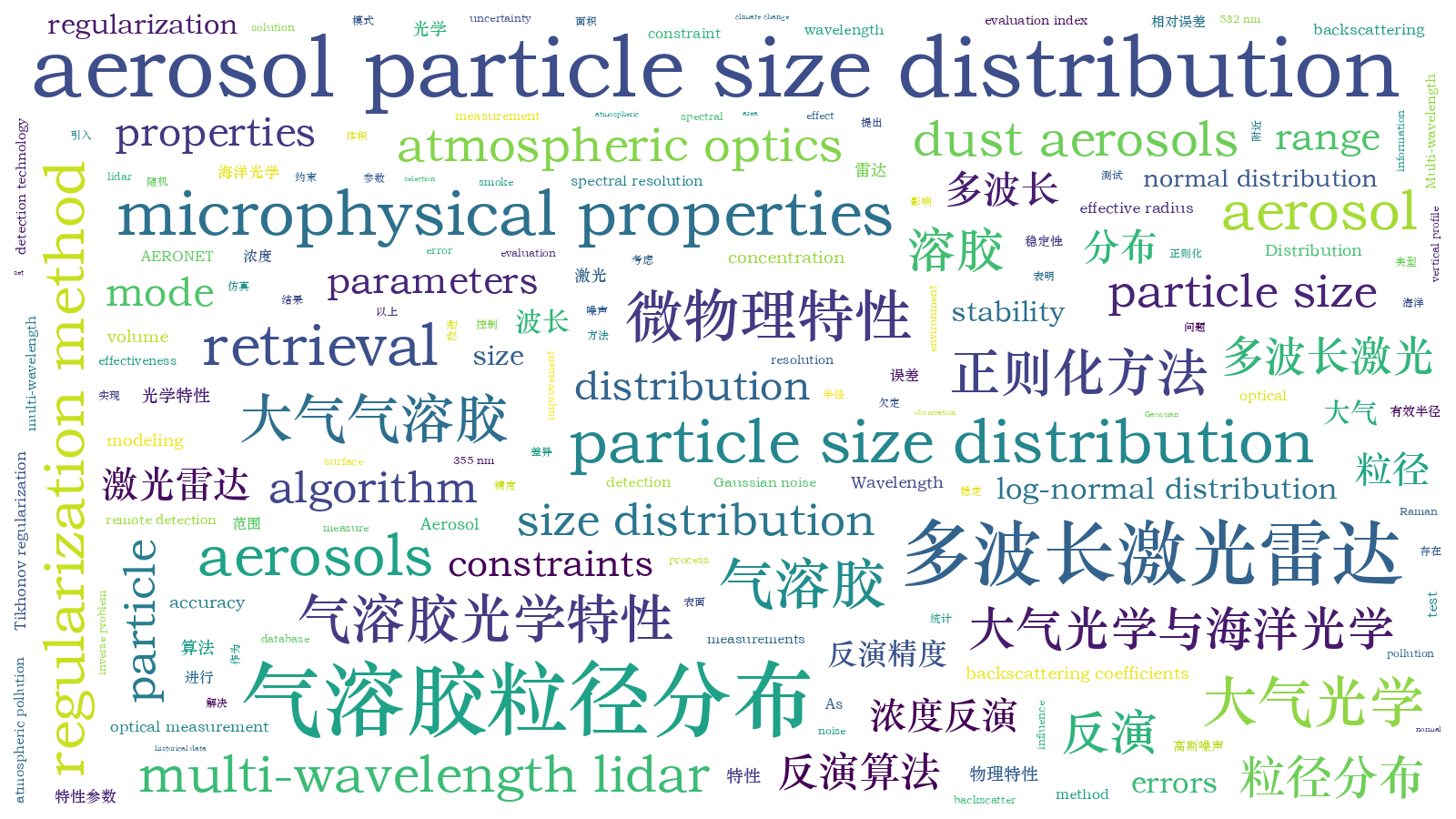大气气溶胶粒径分布的多波长激光雷达反演
Atmospheric aerosols play a crucial role in climate change and atmospheric pollution. Multi-wavelength Raman lidars and lidars with high spectral resolution can accurately measure aerosol extinction and backscatter coefficients for retrieving aerosol particle size distribution, volume concentration, effective radius, and other microphysical properties, which is significant for studying regional and global ecological environments. However, retrieval errors exist in the extinction and backscattering coefficients detected by lidars. When the aerosol microphysical properties are retrieved, the number of unknown parameters required to be solved is often greater than that of optical measurement channels, which is a typical ill-posed inverse problem. As the retrieved results show significant uncertainty in some cases, additional constraints should be introduced to improve the retrieval stability. We propose an advanced regularization retrieval algorithm that introduces a priori mode radius range as a constraint to improve the retrieval accuracy of particle size distribution parameters of different aerosol types.
In our study, an advanced retrieval algorithm for aerosol microphysical properties based on the regularization method is developed. The entire algorithm process is shown in Fig. 1. Based on the Tikhonov regularization retrieval, the reliable retrieval of microphysical particle properties can be realized with a combined data set of particle backscattering coefficients at 355, 532, and 1064 nm and extinction coefficients at 355 nm and 532 nm. Generally, only those solutions for which the optical discrepancy term takes its minimum are selected in retrieval, but here all individual solutions that are within a certain range around this minimum solution are averaged. As a result, the retrieval stability can be improved. Additionally, referring to the aerosol models from the AERONET database, we obtain the volume mode radius ranges of coarse and fine mode aerosols. By employing this as a priori constraint, further selection is performed on the reconstructed particle size distribution to obtain the final retrieved results after averaging.
To test the effectiveness of a priori mode radius constraints on improving the retrieval accuracy of particle size distribution, we conduct the simulations of four typical tropospheric aerosol types: (i) urban aerosols, (ii) smoke aerosols, (iii) desert dust aerosols, and (iv) marine aerosols, with parameters derived from observation data from several AERONET stations. Fig. 2 compares the distribution changes of reconstructed particle sizes after introducing a priori constraints. Meanwhile, Table 2 quantitatively compares the results in Fig. 2 by adopting mean relative errors as the evaluation index. The comparison results indicate that introducing mode radius constraints significantly improves the retrieval results of coarse mode aerosols. Referring to the range of aerosol microphysical parameters (Table 3) given in historical data, we generate 1500 sets of bimodal log-normal distribution data to test the algorithm. Considering the effect of 20% random Gaussian noise, the relative errors of the retrieved effective radius, volume concentration, and surface area concentration are controlled within the range of ±33%,±45%,and ±50% respectively in the cases over 90%. This indicates that the algorithm has sound stability and can tolerate input error effects within a certain range.
We propose an advanced retrieval algorithm for aerosol microphysical properties based on the regularization method, which significantly improves the stability and accuracy of retrieval and solves the problem of large retrieved errors in some cases. The proposed algorithm improves the remote detection technology of aerosols by multi-wavelength lidars. These measurements can provide accurate information about aerosol microphysical properties. The vertical profile of aerosol parameters obtained from lidar detection can be a great improvement of aerosol modeling, which will help study the influence of aerosols on climate and environment.
李晓涛, 刘东, 肖达, 张凯, 胡先哲, 李蔚泽, 毕磊, 孙文波, 吴兰, 刘崇, 邓洁松. 大气气溶胶粒径分布的多波长激光雷达反演[J]. 光学学报, 2024, 44(6): 0601013. Xiaotao Li, Dong Liu, Da Xiao, Kai Zhang, Xianzhe Hu, Weize Li, Lei Bi, Wenbo Sun, Lan Wu, Chong Liu, Jiesong Deng. Retrieval of Aerosol Particle Size Distribution from Multi-Wavelength Lidar[J]. Acta Optica Sinica, 2024, 44(6): 0601013.







